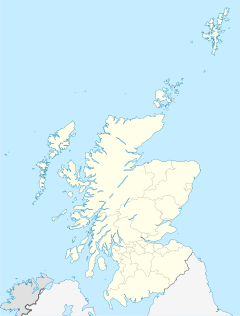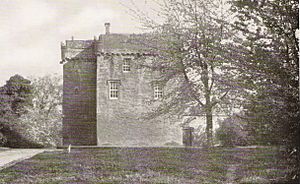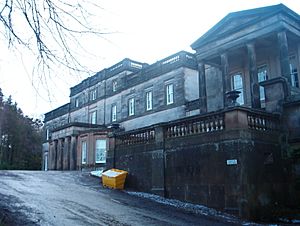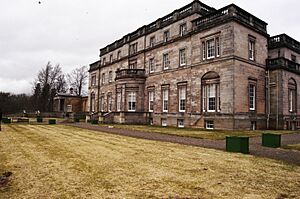Whittingehame facts for kids
Quick facts for kids Whittingehame |
|
|---|---|
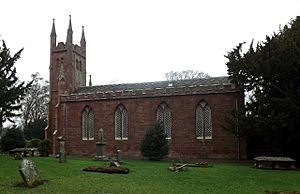 Whittingehame Church, the south aspect |
|
| OS grid reference | NT604735 |
| Civil parish |
|
| Council area |
|
| Lieutenancy area | |
| Country | Scotland |
| Sovereign state | United Kingdom |
| Post town | HADDINGTON |
| Postcode district | EH41 |
| Dialling code | 01620 |
| Ambulance | Scottish |
| EU Parliament | Scotland |
| UK Parliament |
|
| Scottish Parliament |
|
Whittingehame is a small village and parish in East Lothian, Scotland. It is located between the towns of Haddington and Dunbar, close to East Linton. The area sits on the lower slopes of the Lammermuir Hills.
Whittingehame is famous as the birthplace and burial place of Arthur Balfour, who later became a Prime Minister of the United Kingdom. The historic Whittingehame Tower dates back to the 15th century and is still a home today.
Contents
A Long History of Ownership
For a very long time, Whittingehame was owned by important families. It first belonged to the Dunbar Earls of March. They even held their special court here.
In 1372, the Earl of March gave the manor of Whittingehame to James Douglas of Dalkeith. The Douglas family owned the land for over 200 years. In 1564, Mary, Queen of Scots, officially confirmed that William Douglas of Whittinghame owned the land. He was an important judge at the time.
Important Discussions at the Castle
In 1566, it is believed that important discussions about the future of Scotland took place at Whittingehame castle. These talks involved plans related to Mary, Queen of Scots' husband, Lord Darnley. William Douglas of Whittingehame was part of these discussions.
Later, in 1582, William Douglas was also involved in a historical event known as the Raid of Ruthven. This was when a group of Scottish nobles took control of the young King James VI.
Over time, the ownership of Whittingehame changed hands again. In 1817, the land was sold to James Balfour. He had earned a lot of money in India. James Balfour bought many more properties nearby, making the Whittingehame estate much larger. By 1900, there were about 25 farms on his estate.
Whittingehame House
When James Balfour bought the estate, he decided to build a grand new home. He hired a famous architect, Sir Robert Smirke, to design it. The new house, called Whittingehame House, was finished around 1817. More changes were made to it ten years later by another architect, William Burn.
This large house became the family home for the Balfours. It was the birthplace of two very important people:
- Arthur Balfour: He later became the Prime Minister of the United Kingdom.
- Francis Maitland Balfour: A well-known scientist.
A School for Refugee Children
Between 1939 and 1941, Whittingehame House was used for a very special purpose. It became a school for Jewish children who were refugees. These children came to Britain through the Kindertransport program, which rescued them from danger in Europe. The school was called the Whittingehame Farm School. It provided a safe place for 160 children, aged 7 to 17.
Today, Whittingehame House is a huge, historic building. It has been divided into private apartments and is not open to the public.
Village and Church
Whittingehame has had a school for a very long time. In 1742, Mr. James Hogg became the schoolmaster there.
In 1820, James Balfour also rebuilt the local church. Then, in 1840, he created a new, planned village. This new village was built to the north-west of the older settlement. It includes a schoolhouse and several cottages, all built from red sandstone.
For a few years in the 1950s, Whittingehame House was used as a boarding school for boys. After that, it was sold and turned into apartments.


